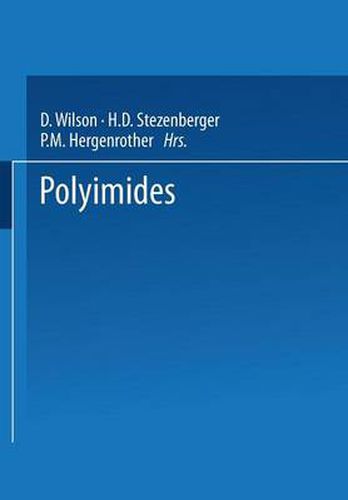Readings Newsletter
Become a Readings Member to make your shopping experience even easier.
Sign in or sign up for free!
You’re not far away from qualifying for FREE standard shipping within Australia
You’ve qualified for FREE standard shipping within Australia
The cart is loading…






This title is printed to order. This book may have been self-published. If so, we cannot guarantee the quality of the content. In the main most books will have gone through the editing process however some may not. We therefore suggest that you be aware of this before ordering this book. If in doubt check either the author or publisher’s details as we are unable to accept any returns unless they are faulty. Please contact us if you have any questions.
The last twenty years or so have seen a flurry of activity in the synthesis of new polymer systems. This interest has developed largely as a result of the increased need for advanced materials. Despite the emergence of a number of outstanding polymers, it is the polyimides that have captured the imagination of scientists and engineers alike as materials that offer outstanding promise for the high technology applic ations of the future. The reputation of the polyimide has been established on the bases of outstanding thermal stability, excellent mechanical properties and the ability to be fabricated into useful articles. Polyimides offer a versatility unparalleled in most other classes of macromolecules. Polymers can be prepared from a variety of starting materials, by a variety of synthetic routes. They can be tailor-made to suit specific applications. By judicious choice of starting materials, polymers can be made that offer variations in such properties as glass transition tempera ture, oxidative stability, toughness, adhesion, and permeability. It is this versatility that has led to the use of polyimides in a wide variety of applications. The electronics industry makes extensive use of poly imide films in, ior example, semiconductor applications. The leading polymer matrices for high temperature advanced composites are polyimides. High temperature adhesive systems for the bonding of metals or composites are often based on polyimides. In addition, polyimides are now finding use as fibres, foams, sealents and even membranes for the low energy separation of industrial gases.
$9.00 standard shipping within Australia
FREE standard shipping within Australia for orders over $100.00
Express & International shipping calculated at checkout
This title is printed to order. This book may have been self-published. If so, we cannot guarantee the quality of the content. In the main most books will have gone through the editing process however some may not. We therefore suggest that you be aware of this before ordering this book. If in doubt check either the author or publisher’s details as we are unable to accept any returns unless they are faulty. Please contact us if you have any questions.
The last twenty years or so have seen a flurry of activity in the synthesis of new polymer systems. This interest has developed largely as a result of the increased need for advanced materials. Despite the emergence of a number of outstanding polymers, it is the polyimides that have captured the imagination of scientists and engineers alike as materials that offer outstanding promise for the high technology applic ations of the future. The reputation of the polyimide has been established on the bases of outstanding thermal stability, excellent mechanical properties and the ability to be fabricated into useful articles. Polyimides offer a versatility unparalleled in most other classes of macromolecules. Polymers can be prepared from a variety of starting materials, by a variety of synthetic routes. They can be tailor-made to suit specific applications. By judicious choice of starting materials, polymers can be made that offer variations in such properties as glass transition tempera ture, oxidative stability, toughness, adhesion, and permeability. It is this versatility that has led to the use of polyimides in a wide variety of applications. The electronics industry makes extensive use of poly imide films in, ior example, semiconductor applications. The leading polymer matrices for high temperature advanced composites are polyimides. High temperature adhesive systems for the bonding of metals or composites are often based on polyimides. In addition, polyimides are now finding use as fibres, foams, sealents and even membranes for the low energy separation of industrial gases.